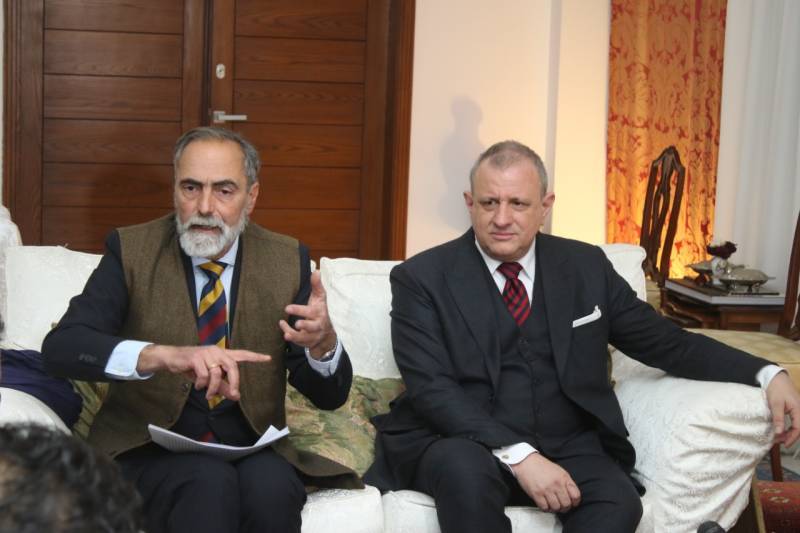ISLAMABAD - Italian Archaeological Mission in Pakistan yesterday announced that this year’s excavation brought to light the Shahi Vishnuite temple in its entirety in Khyebr Pakhtunkhaw.
“As it is known, of the temple remain only the podium, the related floors, conspicuous part of the decoration with pilasters with pseudo-ionic capitals, remarkable examples of the original marble decoration of the Turki Shahi period,” said globally known Italian archaeologist Luca M. Olivieri at a reception hosted here by Italy’s Ambassador to Pakistan Andreas Ferrarese at his residence.
He said at the end of the month of October, a series of robbers’ pits in the central zone of the ancient city was explored and it revealed a very important Buddhist monument, preserved despite the robbers’ vandalism. At the sides of the monument there is a minor stupa, a cell and the podium of a monumental pillar, he added.
Luca M. Olivieri said the most interesting information comes from the pre-Saka phases of the monument which, with a slightly different form, dates back to the Maurya period and later Indo-Greek as confirmed by coins and pottery found there.
“The phases presented features dating both to the Iron Age and, after a deep layer of alluvium, at about 8 meters from the data point, pertaining to the Chalcolithic,” he added.
During an excavation in November 2021 in north-west of the main urban exposure of Barikot, he said, “we discovered a row of graves of unknown age and other archaeological features. These graves contain pottery shards and other rare finds which could date back (typologically and preliminarily) to the Indo-Greek and Saka-Parthian period.”
At the end of the excavations more than 2200 objects - sculptures, coins, inscriptions, ceramics, ornaments, iron weapons, stone tools - were found, restored and handed over to the Khyber Pakhtunkhaw government. In the fifties of the previous century, he said, F A Khan carried out a systematic campaign of archaeological excavations, which brought to the light amazing information.
“After the site of Banbhore fell again into oblivion until the 2010.On a secondary branch of the Indus, its towered (55 towers) bastioned citadel dominates the surrounding environment, which today is populated by few villages and nomad herders with their flocks,” Olivieri said.
In 2010 the undersigned, he said, at the time scientific-director of an Italian research in Makran and Kharan) and Dr Monique Kervran, scientific-director of a French research-group on the Indus deltaic region, were invited to join hands with Pakistani scholars, under the scientific-direction of Dr Asma Ibrahim, and to resume historical-archaeological research in Banbhore under the scientific coordination of Dr Kaleemullah Lashari.
The Italian Archaeological Mission in Pakistan started sondages at Bir-kot-ghwandai (Bazira) in 1977 when Professor Giorgio Stacul discovered the earliest sequence of the site (1700-800 BCE) with important discoveries of a typical painted pottery of Chalcolitic period.
It was only later that the signs of the old city of Bazira were found (1984) in a trial trench by Professor Pierfrancesco Callieri. In 1985, the defensive wall and a bastion of the city of Bazira were discovered. From the year 1990 to 1992, south-western corner of the old city were dug out.
From 1993 to 1995, survey of the entire area was conducted. In 1996, the whole ghwandai (hill) was acquired on lease.
Earlier, Ambassador Andreas Ferrarese said Pakistan and Italy were great friends. He said the two countries had a lot in common in the culture and history.
The envoy appreciated Luca M. Olivieri and his team for tremendous achievements in Pakistan in the field of archaeology. He vowed to enhance the partnership and cooperation to a new level in the years to come. Government officials and archaeologists participated in the event.






